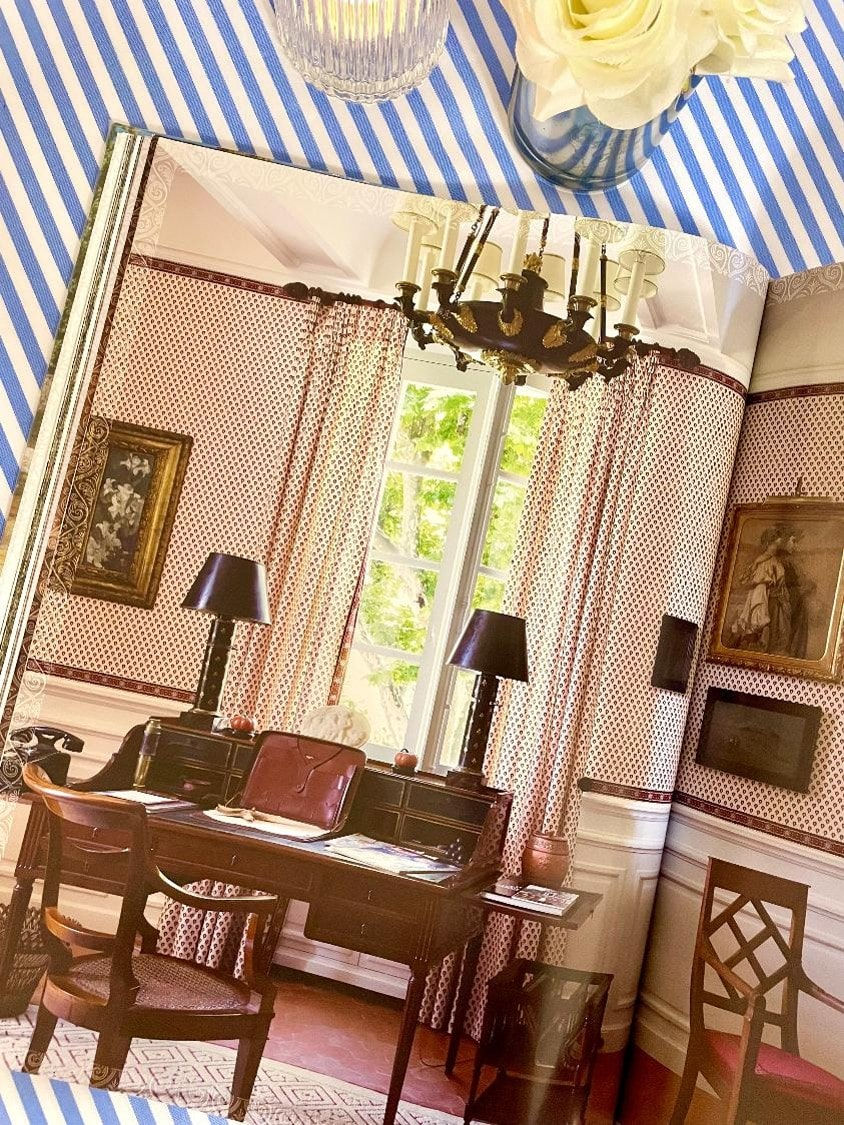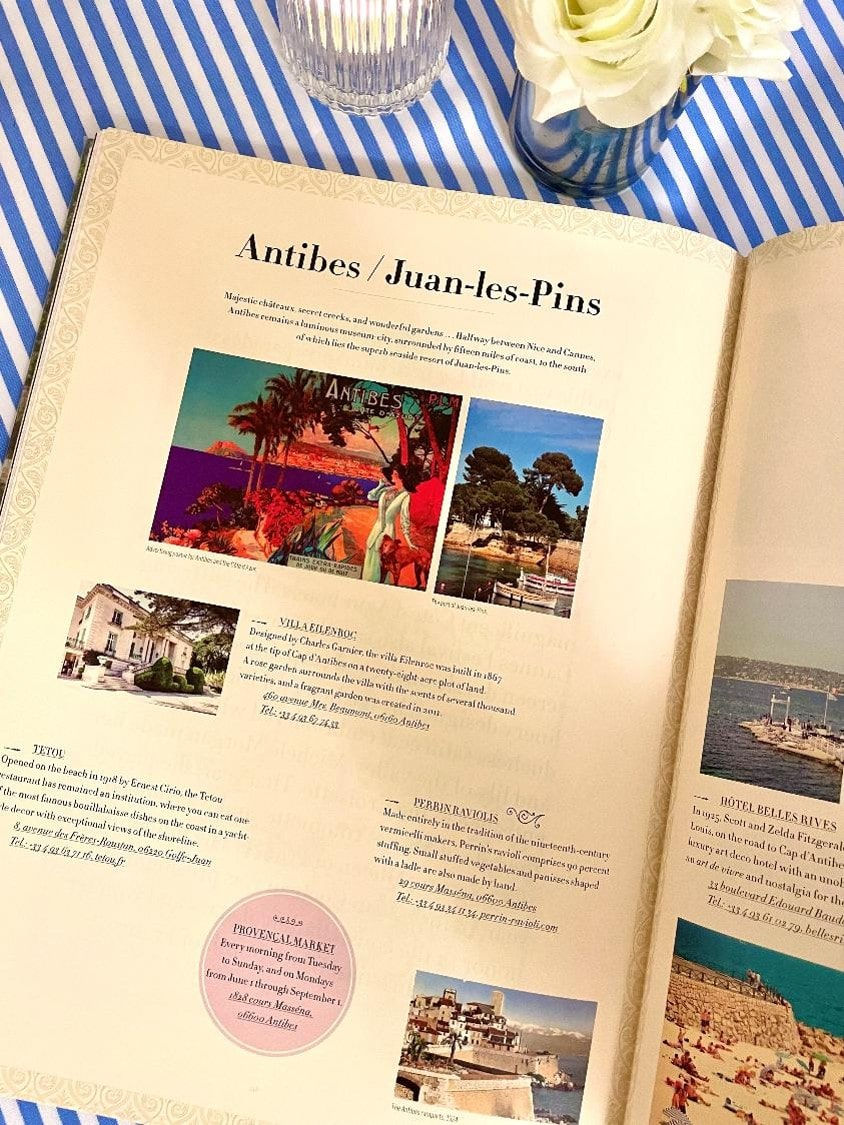When Parisian couturier meets Provence - “Christian Dior in the South of France: The Château de la Colle Noire” by Laurence Benaim (2017)
- mymoderndarcy
- Sep 3
- 4 min read

Dear readers, about a month ago, I stopped by a luxurious shopping mall where a grand Dior pop-up store was erected in the central atrium, themed "Dioriviera" — a celebration of summer in the style of southern France. Just a five-minute walk away, another, smaller pop-up dedicated solely to the brand’s perfumes was set up in the middle of the walkway. Usually, I pay little attention to such pop-ups since they serve primarily as commercial outposts for luxury brands, but as I passed by, there was one little detail that caught my eye: a beautiful book was displayed on a bookshelf at the pop-up whose cover featured a picturesque countryside vista, green trees lined a boulevard stretching toward a stately mansion under a clear blue sky; this book stood out against the neutral beige backdrop of the pop-up, and I soon realized it was about the late Christian Dior’s holiday home in southern France, Château de la Colle Noire, the very estate where he found inspiration for both his haute couture and perfumes. Sadly, the book was for display only, and my interest in it somehow grew immensely. I soon discovered that it had gone out of print and had become increasingly difficult to find, which only increased its desirability and value. About a week after my birthday, I finally found a pre-owned copy and received it just a few days ago. Today, I would like to take you on a journey through this rare and stunning coffee table book, alongside a brief history of this legendary property.


Titled “Christian Dior in the South of France: The Château de la Colle Noire”, published by Rizzoli in 2017, and penned by French journalist and writer Ms. Laurence Benaïm, renowned for her work on fashion legends, this exquisite book offers an intimate visit to the legendary holiday estate of the late couturier. Nestled in Provence at the entrance of the Pays de Fayence, on the border between the Alpes-Maritimes and Var regions, Château de la Colle Noire is a mere half hour’s drive from Grasse, the world capital of perfume. Originally, the estate comprised plowed fields, pastures, vineyards, and mulberry trees. It was the residence of Mr. Henri-Emmanuel Poulle, a lawyer and the first president of the Court of Aix-en-Provence, as well as deputy of the Var region. After his passing, the property changed hands several times before Christian Dior purchased it in October 1950. From 1955, Dior entrusted its restoration and renovation to the Russian architect Mr. Andréï Svetchine, with close collaboration from friends such as Madame Raymonde Zehnacker, then director of the Dior boutique, and the late famed painter Mr. Marc Chagall, each contributing to the estate’s transformation.

The grounds were planted with cypress trees, and Dior redesigned the approach: a walkway leads to a hexagonal entrance hall crowned by an atrium he designed. The Provençal calade floor features a compass rose motif, evoking his childhood home in Normandy. The new layout includes a grand staircase with zenithal lighting leading to guest rooms intended for “passing friends”, a succession of reception rooms, and an impressive salon, opening onto a terrace overlooking the tranquil reflecting pool. The décor blends vintage furniture and 1950s comfort with references to Provence and England, creating a unique art of living at La Colle Noire.


The reception rooms and Dior’s private apartment are furnished eclectically, adorned with 18th- and 19th-century objects acquired from antique dealers. Certain rooms evoke styles such as Louis XV, Louis XVI, and the exotic Retour d’Égypte. Provence also inspired Dior’s legendary ‘Miss Dior’ perfume, launched in 1947, while the lily of the valley from La Colle Noire’s garden was the essence at the heart of the iconic ‘Diorissimo’ perfume, created in 1956 by the late French master perfumer Mr. Edmond Roudnitska. This enduring olfactory tradition inspired Mr. François Demachy, then perfumer of the fashion house, to create “La Colle Noire”, featuring the May rose cultivated in the estate’s garden as a tribute to the property’s heritage. After Monsieur Dior’s passing in 1957, the estate passed to his sister Catherine. Unable to maintain the chateau, she sold it to the Laroche family, owners of La Réserve in Beaulieu, before Parfums Christian Dior acquired it in 2013. A major restoration then took place in 2015, preserving the estate’s timeless elegance.

As I flipped through this book, I was mesmerized by the exceptional photography by Mr. Miguel Flores-Vianna and Mr. Bruno Suet, which beautifully captures the estate from the outside in. The lush gardens and flower fields are portrayed with such intimacy that one can almost breathe in the fragrances that inspired Dior’s perfumes. Inside the book, the photographs reveal its exquisite details, from the grand 18-meter salon reflecting Dior’s passion for the 18th century intermixed with 19th-century romantic flourishes, to his home office with its luxurious directoire chair and desk overlooking the garden, and the elegant bedroom featuring a ‘lit d’alcôve’ swathed in Pierre Frey yellow linen velvet. Every corner of this home reveals the late couturier’s impeccable taste and artistic vision, translated beyond couture into the fabric of his daily life.


This book also includes rare vintage photographs of the couturier’s life and gatherings with stylish guests at Château de la Colle Noire, bringing these memories vividly back to life. Among the book’s other treasures are illustrated vignettes by the French painter Mr. Jean-Philippe Delhomme, depicting Monsieur Dior’s lifestyle and social moments in the South of France. Finally, the book offers a curated visitor’s guide to towns on the French Riviera, including Cannes, Grasse, Saint-Tropez, and Monaco, as well as lesser-known gems, providing tips on places the late couturier frequented or left his mark, perfect for those wishing to trace Monsieur Dior’s footsteps along the Riviera.


Few truly grasp the exquisite charm of southern France without having experienced it firsthand. Through this magnificent book it enables one to enjoy an ideal preview, not only of the stunning Château de la Colle Noire but also of the world and spirit of Christian Dior himself. It is an invitation to immerse oneself in the elegance, the inspirations, and the artistry that forever entwine Dior with the sun-soaked landscapes and scents of the French Riviera.


